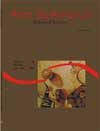Predation of pacu (Piaractus mesopotamicus, Holmberg) larvae by cyclopoid copepods (<em>Mesocyclops longisetus</em>, Thiébaud) at different densities in environments with different visual contrast
Abstract
Influence of density of cyclopoid copepods (Mesocyclops longisetus) on pacu larvae (Piaractus mesopotamicus) predation in environments with different visual contrast is provided. Three hundred and sixty larvae (Lt: 5.77±0.23 mm and Wt: 6.57 mg) were distributed in 24 one-liter light-color-lined aquaria, in a entirely randomized design, with eight treatments and three replications, with densities 0, 10, 20 and 30 copepods/L. Similar densities were used and distributed in aquaria with dark plastic lined interior. Dead larvae were counted hourly and removed with a pipette. After three hours from the start of experiment a linear increase in predation rate (p < 0,01) occurred due to an increase in copepod density. The latter were more intense in tanks with 30 copepods/L. Whereas their mean survival rate reached 55.55% after 13 hours, no mortality occurred in the reference aquaria. With regard to the aquaria’s interior lining, differences in results ranged from the 4th to the 9th observation, with smaller survival values of pacu larvae in light-colored aquaria. It may be concluded that increase in copepod density and absence of lining on walls of aquaria favor higher predation rates of copepods on pacu larvaeDownloads
Download data is not yet available.
Published
2008-05-09
How to Cite
Faria, A. C. E. A. de, Hayashi, C., & Soares, C. M. (2008). Predation of pacu (Piaractus mesopotamicus, Holmberg) larvae by cyclopoid copepods (<em>Mesocyclops longisetus</em>, Thiébaud) at different densities in environments with different visual contrast. Acta Scientiarum. Biological Sciences, 23, 497-502. https://doi.org/10.4025/actascibiolsci.v23i0.2686
Issue
Section
Biology Sciences
DECLARATION OF ORIGINALITY AND COPYRIGHTS
I Declare that current article is original and has not been submitted for publication, in part or in whole, to any other national or international journal.
The copyrights belong exclusively to the authors. Published content is licensed under Creative Commons Attribution 4.0 (CC BY 4.0) guidelines, which allows sharing (copy and distribution of the material in any medium or format) and adaptation (remix, transform, and build upon the material) for any purpose, even commercially, under the terms of attribution.
Read this link for further information on how to use CC BY 4.0 properly.
0.6
2019CiteScore
31st percentile
Powered by 

0.6
2019CiteScore
31st percentile
Powered by 











1.png)




3.png)













